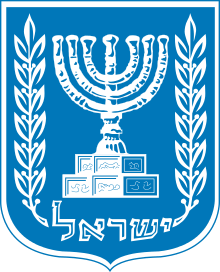Arab satellite lists
 |
| This article is part of a series on the politics and government of Israel |
|
Legislature |
The Arab satellite lists or Arab lists were Israeli Arab electoral lists formed for the purposes of electoral support of Mapai (and later the Labor Party), Mapam and the General Zionists between 1948 and the mid 1970s.[1][2][3] Between the 1949 elections and the 1969 elections, most of the Israeli Arab vote was divided between the communist parties Maki and Rakah (an Arab-dominated breakaway from Maki in 1965, recognised by the Soviet Union as the official communist party) and the Arab satellite lists.[1] Maki and Rakah were considered the only parties to truly represent Arab interests until the Progressive List for Peace won two seats in the 1984 elections.[1]
The existence of the Arab lists was partially because Arabs were barred from membership of Mapai until 1973.[4] Unlike normal political parties, they were not active between elections.[5] Most of the lists survived more than one term, and all were subservient to the policies of their patron Mapai.[2]
According to Ilana Kaufman, the Arab lists; "were not proper parties but ad hoc electoral arrangements for the election of Arabs to the Knesset."[6] Majid Al Haj writes that the object of the lists "was not the political mobilization of the Arab populations but rather the capture of Arab votes."[7]
The Labor Party withdrew its support from its last satellite list, the United Arab List, prior to the 1981 elections. The Alignment, an alliance of the Labor Party and Mapam, saw its share of the Arab vote triple in the elections,[8] whilst the UAL failed to cross the electoral threshold. The Arab Democratic Party, established in 1988 as a breakaway from the Labor Party, effectively took their place in the political sphere.[9]
List of Arab satellite lists
- Agriculture and Development (Mapai)
- Arab List for Bedouin and Villagers (Labor Party)
- Cooperation and Brotherhood (Mapai, Labor Party)
- Cooperation and Development (Mapai)
- Democratic List for Israeli Arabs (Mapai)
- Democratic List of Nazareth (Mapai)
- Popular Arab Bloc (Mapam)
- Progress and Development (Mapai, Labor Party)
- Progress and Work (Mapai)
- United Arab List (Labor Party)
References
- 1 2 3 Rebecca Kook: "For the first seven rounds of elections. most of the Arab votes were distributed amongst the Israeli Communist party (Maki later to become Rakach. later to become Hadash) and various Mapai and Mapam satellite lists. These were lists formed by the two main labor movement parties headed by Arab candidates. They were for all intents and purposes, however, extensions of the leading parties in terms of positions and coalition alignment. They are commonly described as satellite lists because of the patronage relationship between them and Mapai. The Israel Communist party, however, was long considered the only party to truly represent Arab interests until the appearance of the Progressive List for Peace (PLP) in 1984."; in Israel in Comparative Perspective: Challenging the Conventional Wisdom, edited by Michael N. Barnett, p.214
- 1 2 As'ad Ghanem: "Most of the lists were established by Mapai under Ben-Gurion... Most of them served more than one term and all were subservient to the leaders of Mapai".The Palestinian-Arab Minority in Israel, 1948-2000: A Political Study, As'ad Ghanem, p.41
- ↑ Israel at the Crossroads, edited by Efraim Karsh, Gregory S. Mahler, p.157
- ↑ Palestinian Citizens in an Ethnic Jewish State: Identities in Conflict, Nadim N. Rouhana, p.96
- ↑ Rael Jean Isaac, "The Mapai-affiliated lists were not active between elections but were ad hoc organizations formed on the eve of elections to assure the election of specific leaders."; in Party and Politics in Israel: Three Visions of a Jewish State, p.173, Addison-Wesley Longman Limited, 1981
- ↑ Ilana Kaufman: "The Arab lists, as their name indicates, were not proper parties but ad hoc electoral arrangements for the election of Arabs to the Knesset."; in Arab National Communism in the Jewish State, p.82
- ↑ Majid Al Haj: "Until the late 1960s, Arab-alliliated Knesset lists were one of the most efficient instruments for channeling Arab votes. These satellite lists were initiated and backed by Zionist parties, mainly Mapai-Labour, which was the principal political force until 1977. The object of these lists was not the political mobilization of the Arab populations but rather the capture of Arab votes."; in Immigration and Ethnic Formation in a Deeply Divided Society, p.64
- ↑ Bernard Reich & David H Goldberg (2008) Historical Dictionary of Israel, p. 45
- ↑ Ghanem, p. 42